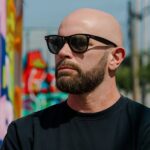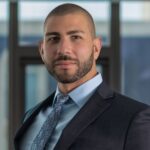Financial instability and bankruptcy often signal the end for hospitals. But for Randolph Health, a community hospital in Asheboro, North Carolina, this was just the beginning of a remarkable boost—one fueled by a strategic partnership with Open Source M.D. (OSMD), an innovative hospital staffing company co-founded by visionaries Dr. David A. Rosen and Dr. William A. Keates. Its unique staffing model propelled the hospital’s profitability and expanded critical services for the local population.
Randolph Health’s downward spiral began in late 2010 when it struggled with mismanagement and misallocation. Patient volumes dropped as the hospital’s services deteriorated and revenues dwindled. By 2019, they were bankrupt and teetering on the edge of closure. Despite these challenges, it attracted interest from American Healthcare Systems (AHS), a California-based organization looking to expand.
In July 2021, the organization acquired Randolph Health. Alongside this acquisition, OSMD entered the picture, as the hospital’s new owner recognized the value of OSMD’s model and boldly decided to bring them on board. This was a pivotal moment in the hospital’s remarkable change of course.
When OSMD took over Randolph Health’s hospitalist services, they made immediate changes that focused on reallocating resources to areas that added direct value to patient care. Unlike traditional models prioritizing administrative spending, OSMD’s approach was rooted in the belief that “there’s plenty of finances in healthcare; it’s just not being utilized properly.” By eliminating unnecessary middle management and directing the funds toward medical staff and patient care, OSMD quickly transformed the hospital’s operations.
One significant change OSMD implemented was its physician staffing model. Traditionally, hospitals employ W2 doctors on fixed shifts, which limits flexibility and often leads to underutilization of staff. OSMD, however, relies on independent contractors, allowing the hospital to scale its physician workforce according to patient demand. This flexibility improved the hospital’s ability to handle fluctuations in patient volume and reduced burnout among physicians, leading to higher morale and better patient outcomes.
OSMD’s model also strongly emphasized proper documentation and billing, helping ensure that the hospital was reimbursed fairly for its services. This meticulous attention to detail and a streamlined staffing system resulted in the hospital’s positive financial revamp. Within months of OSMD’s involvement, the facility achieved a significant financial turnaround, generating a substantial profit.
The success of this hospital did not end with financial recovery. They have since expanded its services, adding new specialty areas such as nephrology, dialysis, and interventional cardiology. These additions have reduced the need for community members to travel long distances for specialized treatments. “This is what’s special about the AHS founder,” Dr. Rosen notes. “He didn’t strip the hospital just for profit. Instead, he reinvested in the community, adding services that patients used to have to drive long distances to access.”
This 180° change for the hospital offers important lessons for the broader healthcare industry—the systematic issue of administrative bloat. Dr. Keates shares, “Since the 1970s, there hasn’t been a significant increase in the number of physicians being trained, but the number of healthcare administrators has ballooned by over 3,200%.” This growth in administrative positions has only served to bloat hospital budgets without really focusing on patient care.
By contrast, OSMD cuts out unnecessary third-party management companies and focuses on physicians and services that directly benefit patients. This improves patient outcomes while boosting the morale of the medical staff leading to better long-term retention of doctors and a more stable, sustainable hospital system.
“It was a very positive relationship. With over 30 years of experience in the healthcare space, I can confidently say that Open Source MD is the best I have worked with. Their truly fresh approach and unique staffing model, which focused on bringing in community physicians rather than outsourcing, was highly effective. The respect they demonstrated throughout our partnership gave me confidence that, if any issues arose, they would be addressed immediately and effectively.” – Timothy Ford, CEO at Randolph Health, during an interview on December 19, 2024, in Asheboro, North Carolina.
Randolph Health’s turnaround is more than just a financial success story; it’s a testament to the power of thoughtful, physician-led management. Open Source M.D.’s staffing and management model has breathed new life into this once-struggling hospital, showing that a strategic focus on people, care, and operational efficiency can yield remarkable results even in the face of bankruptcy. As healthcare systems continue to navigate financial challenges, this case study of OSMD serves as an inspiring example of what’s possible when the right changes are made.
Published by Elle G.

















